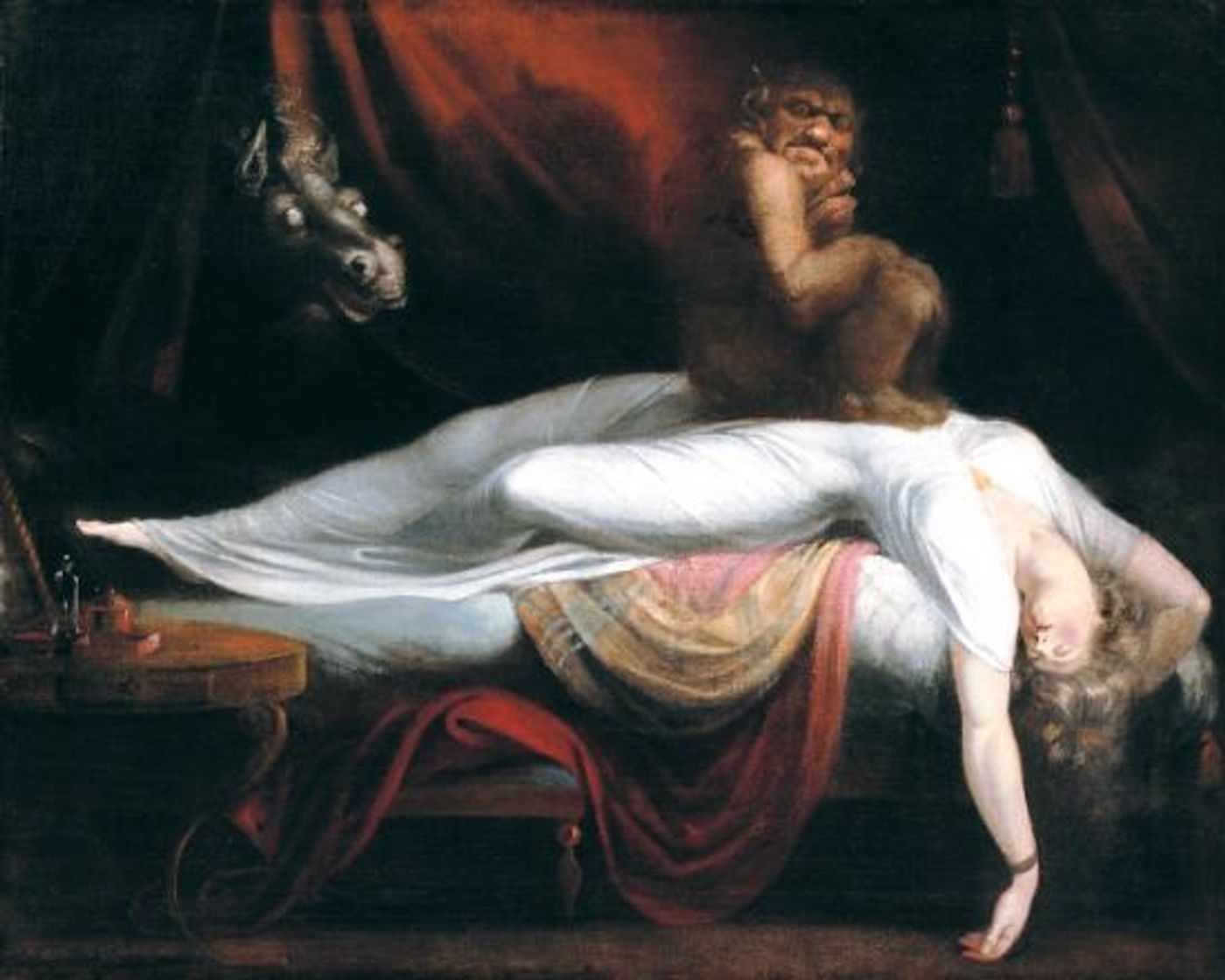In Brazil, it’s known as “Pisadeira,” a creature that lurks on rooftops at night, and then bears down on unsuspecting people while they sleep. In Spain, sufferers call it “Pesanta,” a name for a black animal that also preys on sleeping people. In some Asian cultures, it’s a spirit that weighs down the slumberer.

These rich and imaginative folk stories capture a very real and frightening phenomenon known as sleep paralysis. This condition occurs when a person is caught between the dream state and the wakefulness state – the body is in total paralysis mode while the person is conscious and dreaming.
"When people have a nightmare, they sleep, have a dream and then wake up. When they're experiencing sleep paralysis, they may have a dream when they are already awake," explained Steven Bender, director of Texas A&M University's Center for Facial Pain and Sleep Medicine.
It doesn’t sound so bad until we remember that the body is still completely immobilized because the brain thinks we’re still asleep. This natural inhibition of motor neurons to prevent a person from acting out their dream becomes the factor that makes sleep paralysis so frightening.
"People who experience sleep paralysis can have vivid hallucinations because they are dreaming," said Bender. "People have felt like they're levitating or that someone is in their bedroom or a variety of other strange experiences, like alien abductions."
Indeed, the experience is surreal. For me, it happens most often when I can’t consciously decide to wake up from a nap or sleep just a little longer. If I linger too long between these states, the weight on the chest sets in, slowly but oppressively. At this point, I’ll want to wake up, but my eyelids feel weighed down with lead bricks. Then comes the wakeful nightmares of intruders in the room – sometimes climbing in the bed, sometimes hovering on top, always dark, featureless, and full of menace. But I can’t even move to scream or lift a finger. It’s like being trapped in a prison of my own nightmare.
The variety of cultures in which sleep paralysis is known indicates that this condition is much more common than we imagined. It’s estimated that the disorder affects as much as 25 percent of the population. For some, it may be a singular terror-inducing experience. For others, like myself, the unwanted episodes has happened a few too many times.
Luckily, the episodes only last a few minutes in real time. Furthermore, researchers say there are ways to minimize the risk of such experience, one of which is to have a regularly schedule sleep/wake cycle. Of note, reducing the snoozing may be the most effective way to curb my sleep paralysis.
Additional sources:
Live Science,
UPI,
Chicago CBS news









